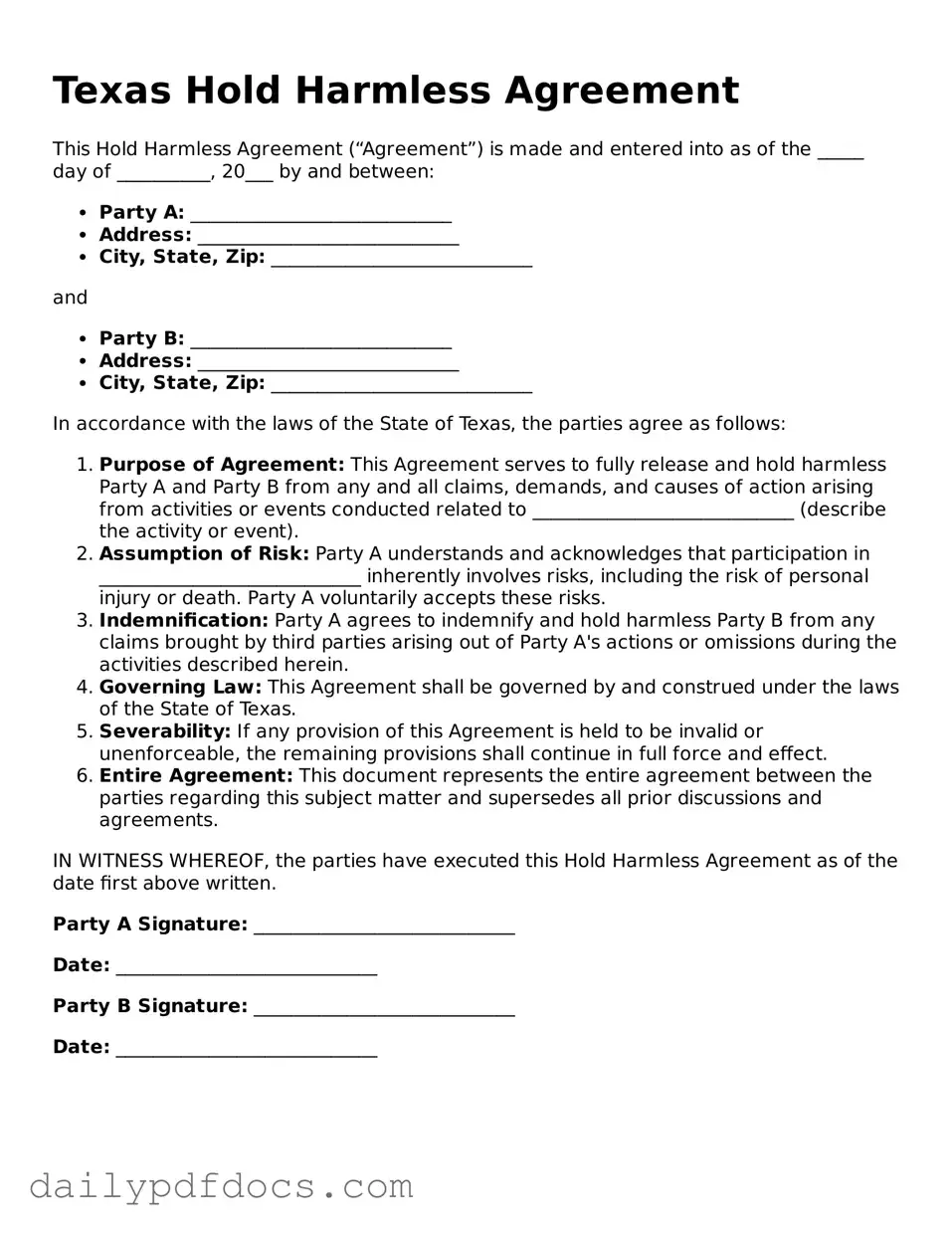What is a Texas Hold Harmless Agreement?
A Texas Hold Harmless Agreement is a legal document designed to protect one party from liability for any injuries or damages that may occur during a specific activity or event. This agreement is often used in various situations, such as construction projects, events, or when one party is providing services to another. By signing this agreement, one party agrees to assume the risk of any potential losses or damages, thus relieving the other party from responsibility.
Who should use a Hold Harmless Agreement?
Individuals and businesses involved in activities where there is a risk of injury or damage should consider using a Hold Harmless Agreement. This includes contractors, event organizers, and service providers. For example, if a contractor is hired to work on a property, the property owner might require the contractor to sign this agreement to ensure that they are not held liable for any accidents that occur during the work.
What are the key components of a Hold Harmless Agreement?
A typical Hold Harmless Agreement includes several important components. First, it identifies the parties involved. Next, it outlines the specific activities or events covered by the agreement. Additionally, it includes a clear statement of the liability being waived and any exceptions to that waiver. Finally, the agreement often requires signatures from both parties to confirm their understanding and acceptance of the terms.
Is a Hold Harmless Agreement enforceable in Texas?
Yes, a Hold Harmless Agreement is generally enforceable in Texas, provided it meets certain legal requirements. The agreement must be clear and unambiguous, meaning that both parties understand the terms. Additionally, the agreement should not violate public policy or involve gross negligence or willful misconduct. Courts typically uphold these agreements when they are properly drafted and executed.
Can a Hold Harmless Agreement be modified or revoked?
Yes, a Hold Harmless Agreement can be modified or revoked, but both parties must agree to any changes. Modifications should be documented in writing and signed by both parties to ensure clarity and enforceability. If one party wishes to revoke the agreement, they should communicate this intention clearly and follow any procedures outlined in the original document, if applicable.
